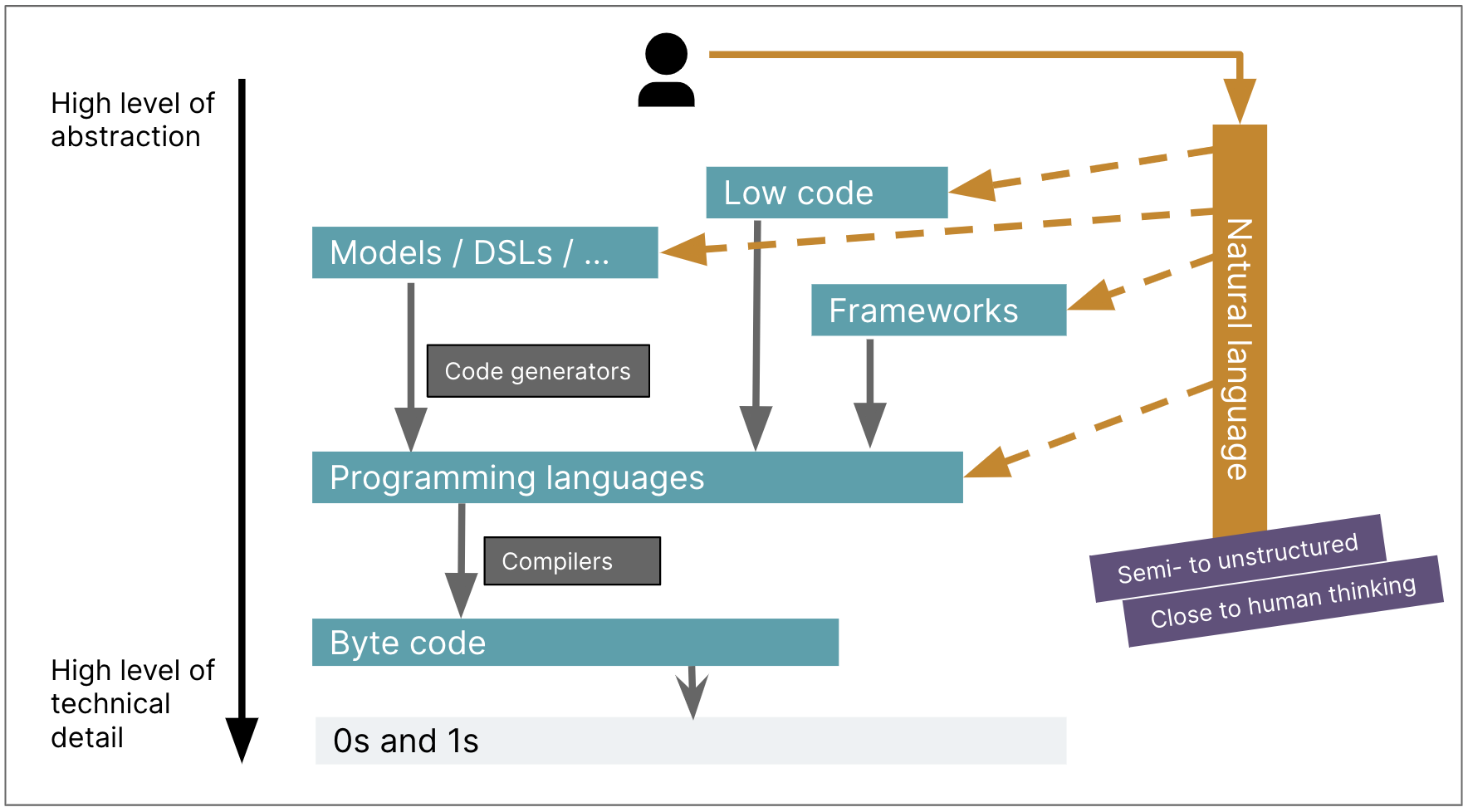Like most loudmouths in this field, I’ve been paying a lot of attention
to the role that generative AI systems may play in software development. I
think the appearance of LLMs will change software development to a similar
degree as the change from assembler to the first high-level programming
languages. The further development of languages and frameworks increased our
abstraction level and productivity, but didn’t have that kind of impact on
the nature of programming. LLMs are making that degree of impact, but with
the distinction that it isn’t just raising the level of abstraction, but
also forcing us to consider what it means to program with non-deterministic
tools.
HLLs introduced a radically new level of abstraction. With assembler I’m
thinking about the instruction set of a particular machine. I have to figure
out how to do even simple actions by moving data into the right registers to
invoke those specific actions. HLLs meant I could now think in terms of
sequences of statements, conditionals to choose between alternatives, and
iteration to repeatedly apply statements to collections of data values. I
can introduce names into many aspects of my code, making it clear what
values are supposed to represent. Early languages certainly had their
limitations. My first professional programming was in Fortran IV, where “IF”
statements didn’t have an “ELSE” clause, and I had to remember to name my
integer variables so they started with the letters “I” through “N”.
Relaxing such restrictions and gaining block structure (“I can have more
than one statement after my IF”) made my programming easier (and more fun)
but are the same kind of thing. Now I hardly ever write loops, I
instinctively pass functions as data – but I’m still talking to the machine
in a similar way than I did all those days ago on the Dorset moors with
Fortran. Ruby is a far more sophisticated language than Fortran, but it has
the same ambiance, in a way that Fortan and PDP-11 machine instructions do
not.
Thus far I’ve not had the opportunity to do more than dabble with the
best Gen-AI tools, but I’m fascinated as I listen to friends and
colleagues share their experiences. I’m convinced that this is another
fundamental change: talking to the machine in prompts is as different to
Ruby as Fortran to assembler. But this is more than a huge jump in
abstraction. When I wrote a Fortran function, I could compile it a hundred
times, and the result still manifested the exact same bugs. LLMs introduce a
non-deterministic abstraction, so I can’t just store my prompts in git and
know that I’ll get the same behavior each time. As my colleague
Birgitta put it, we’re not just moving up the abstraction levels,
we’re moving sideways into non-determinism at the same time.

illustration: Birgitta Böckeler
As we learn to use LLMs in our work, we have to get figure out how to
live with this non-determinism. This change is dramatic, and rather excites
me. I’m sure I’ll be sad at some things we’ll lose, but there will also
things we’ll gain that few of us understand yet. This evolution in
non-determinism is unprecedented in the history of our profession.





